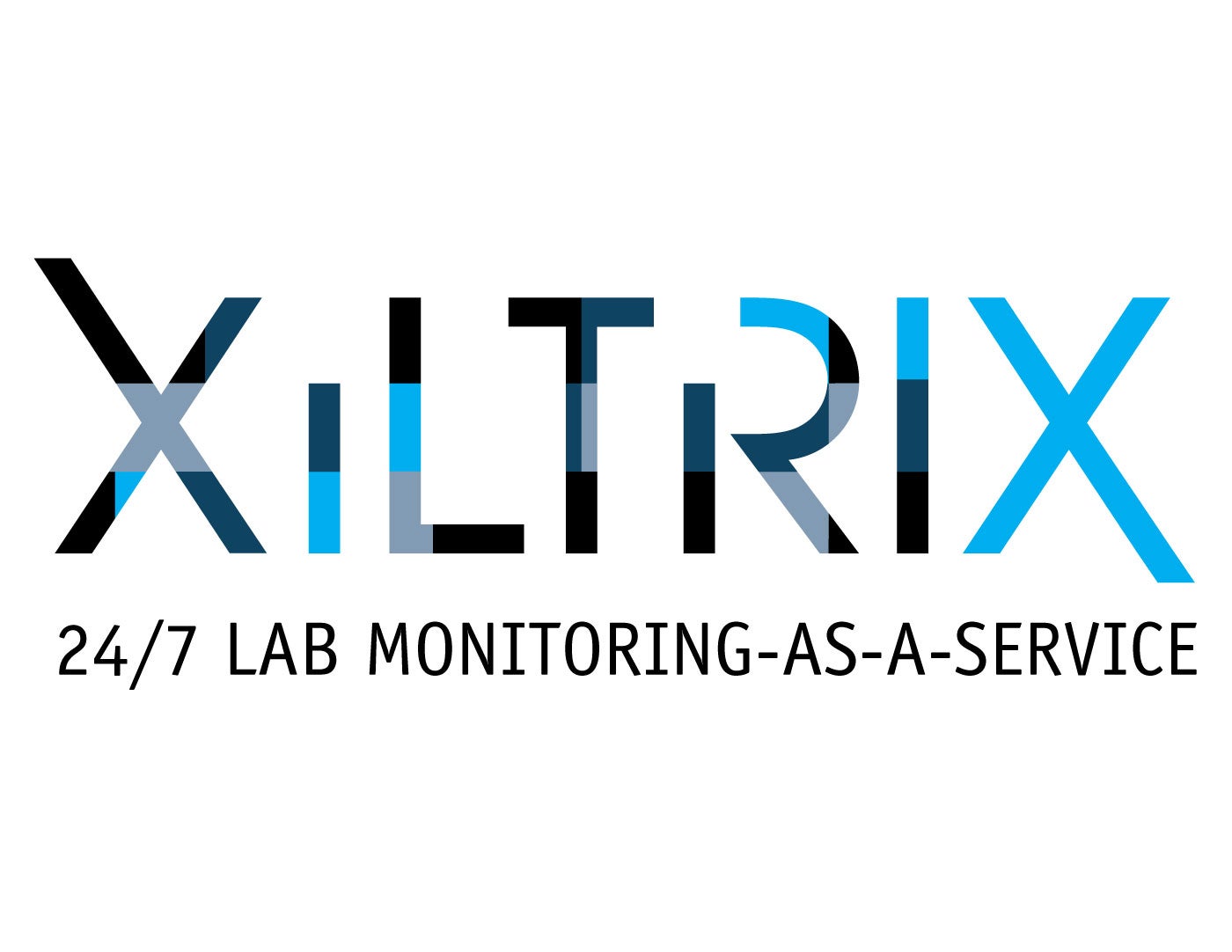Monitoring laboratory environments is crucial to ensuring the safety of pharmaceutical products, especially medicines at greater risk of drug-induced toxicity. Several elements of the laboratory, including heating, ventilation and air conditioning (HVAC) systems, air quality controls, air compressors, purified water systems, leak and flood alerts, gas manifolds, building access and security systems, and power generation and consumption, must be monitored in turn to ensure they are functioning as they should.
Increasingly, many companies are choosing to implement a real-time environmental monitoring system that offers full insight into everything happening at their facilities, to ensure stability in the lab and any surrounding facilities.
Subscription-based services for laboratory monitoring
Established in the Netherlands in 1987, the XiltriX technology was introduced to the North American market in 2018 with the clear purpose of making science safer and more predictable through technology. Recognizing the evolving needs of the life science industry, XiltriX North America was conceived from its very beginning as a subscription-based, monitoring-as-a-service.
Today, XiltriX works with life science facilities on a global scale, developing complete lab monitoring services tailored to each client’s unique goals and needs.
Moises Eilemberg is the CEO of XiltriX North America and was previously CEO of Avadyne Health, a leading provider of technology-enabled revenue cycle services for healthcare companies. Before starting XiltriX North America, Moises visited customers using the XiltriX technology in Europe, which has informed the business’ current strategy.
“After touring a few life science facilities in various stages of modernisation, it was very clear that there were going to be significant changes coming to the environmental monitoring space,” Moises states. “It was surprising to see some very sophisticated organisations performing cutting-edge research, yet relying on rudimentary, siloed, and labour-intensive monitoring devices to mitigate the risk of loss and ensure regulatory compliance.
“With the advent of improved Internet of Things (IoT) technologies and the increasing value of data analytics, it wasn’t hard to see that organisations adopting the XiltriX technology would not only see great efficiencies and cost reductions in the immediate future, but would also be positioning themselves to derive tremendous value from these systems over the next 10-20 years.”
Moises and his team decided on using a subscription service as XiltriX North America’s business model due to the benefits this offers in terms of saving clients money and resources. “Most life science companies want to be experts in their science and core competencies, not in monitoring their facilities or equipment,” he explains. “So with XiltriX, you get the double benefit of 1) not spending a ton of money upfront on purchasing monitoring hardware and software that you will need to install, configure, maintain and eventually replace; and 2) an experienced partner with over 30 years of accumulated knowledge and best practices in the field.
“Another important consideration is that in a subscription-based relationship, the interests of the customer and service provider are much better aligned. We need our customers to stay with us year over year, and our responsibility is to deliver a working monitoring system with minimal downtime day in and day out. As a result, it’s in our best interest to deliver the highest quality solution and to keep our customers happy on a daily basis. We like to say that, unlike our competitors who sell monitoring hardware, our relationship with the customer begins ‒ not ends ‒ at implementation.”
Rapid response teams for lab monitoring and alerting
Developments in the pharmaceutical and life sciences industries over recent years have caused several ‘pain points’ for companies, and it is these that XiltriX seeks to address. “With the tremendous growth and innovation in life sciences over the last few years, we have seen increased operations complexity, frequent facility upgrades and relocations, and significant investment in laboratory and cold storage equipment,” Moises says. “Operations, facilities, and quality assessment (QA) teams are being constantly challenged to keep up with this rapid pace and remain in control of their environments.
“With complexity and rapid change comes risk. We have seen costly errors when relying on manual tasks, tremendous bandwidth pressure on facilities teams, and for some companies that have neglected this area or have tried to do too much themselves, we have seen some very unfortunate and irreversible loss of scientific assets.”
A key component of XiltriX’s operations is its SafetyNet team, which comprises experts who can monitor clients’ working environments constantly and alert them of any issues. “SafetyNet is a concept that we initially adapted from other industries, but it has significantly evolved since we conceived it,” Moises explains. “We initially envisioned it to work much like in the home security space, where you have an operation centre responding to alarms that escalate after a certain period of time.”
SafetyNet has helped XiltriX’s clients avoid potentially major losses by catching alarms that could otherwise have been overlooked, but has also brought other benefits to companies who have used it. “What surprised us is that our customers also rely on SafetyNet for all kinds of other things, ranging from basic system changes to uncovering and diagnosing issues with equipment, to assisting in generating reports for regulatory audits,” Moises says. “In practice, SafetyNet works as an extension of our customers’ operations to ensure their environment is optimally monitored at all times.”
Moises believes that for many of XiltriX’s customers, the platform offers a greatly different experience from other lab monitoring solutions they have tried – one that meets them where they are and guides them through setup and operations. “As we handhold them through the process of implementation, configuration, training, reporting, and ongoing administration, I believe our customers feel a significant burden lifted from their shoulders,” he says. “In addition, knowing that SafetyNet is there in case they miss a critical alarm at 3am is a significant reassurance that helps them sleep better at night.”
One customer consideration that Moises and the XiltriX team have tried to take into account is scalability – developing a monitoring solution that can work for all laboratories, regardless of their size. “Scalability is really important, given the industry’s fast rate of change, and it is frequently a critical consideration for most of our customers,” Moises says. “With XiltriX, our large enterprise customers can monitor an entire campus, but companies with a smaller operation can also start with a single lab and scale up as they grow.” In addition, the XiltriX system and pricing scale modularly, so customers can match it to their size and growth over time.
Adopting best practices and technologies for lab monitoring
XiltriX has doubled in size annually for the past four years, and continues to grow at pace. With that growth comes several challenges, however. “There are many challenges ranging from rapid team growth and constantly refining our operations, to driving technology improvements,” Moises says. “Fortunately, we have a terrific core team that provides a solid foundation to build on and a culture of putting the customer first. As long as our priority is living up to the promise we make to our customers – even if it costs us a bit more in the short term – we can absorb the challenges of rapid growth and build a very successful business for the long term.”
Over the coming years, XiltriX plans to expand and develop its capabilities to reach new customers and deepen its relationships with current partners. “We have been working very hard and investing heavily in new software and hardware platforms that incorporate the best available IoT, Cloud and sensor technologies, but also reflect our many years of experience in lab monitoring,” Moises says. “We are very excited about introducing our new platform later this year, which we believe will raise the bar in the industry for the benefit of our existing and future customers.”



